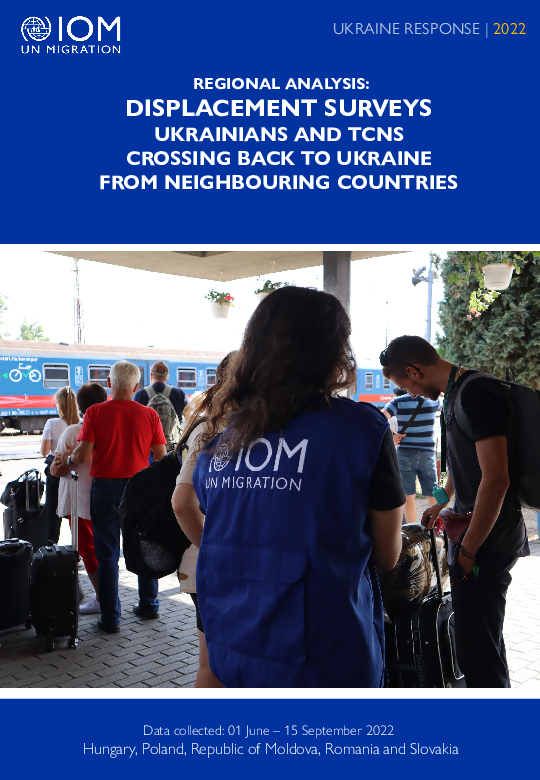-
Countries
-
Data and Analysis
-
Special Focus
-
Crisis Responses
Ukraine Response — Regional Analysis #2 — Ukrainian Refugees and TCNs crossing to Ukraine (01 Jun – 15 Sep 2022)
Starting on 24 February 2022, the war in Ukraine triggered an unprecedented humanitarian crisis and generated large scale displacement both within Ukraine and into the neighbouring countries. As of the end of September, 6.2 million persons were internally displaced in Ukraine1 and 7.4 million refugees from Ukraine were recorded in Europe.2 According to available administrative data, more than 13 million border crossings of refugees and Third-Country Nationals (TCNs) not in need of international protection from Ukraine were reported into the neighbouring countries since February 2022. At the same time, around 6 million were estimated to have returned including both from other locations within Ukraine and self-reported from abroad,3 and about 6 million cross-border movements were registered from Poland, Romania, Slovakia, and the Republic of Moldova among the neighbouring countries into Ukraine as of mid-September.
Since mid-April, IOM has deployed its Displacement Tracking Matrix (DTM) tools to collect individual surveys in neighbouring countries with persons crossing into Ukraine, with the aim to improve the understanding of main profiles, displacement patterns, intentions and needs.
This report is based on 9,495 valid surveys collected by IOM’s DTM in five European countries neighbouring Ukraine with adult refugees from Ukraine and TCNs crossing to Ukraine between 01 June and 15 September 2022: 3,519 in Romania, 3,151 in Poland, 2,418 in the Republic of Moldova, 259 in Hungary and 148 in Slovakia. Total results were weighted as per the number of border crossings into Ukraine reported in each country of the survey during the aforementioned period.
Movements can be pendular, and do not necessarily indicate sustainable returns as the situation across the country remains highly volatile and unpredictable. Hence, individuals surveyed while crossing into Ukraine from neighbouring countries are not necessarily returnees, and conclusions on definitive trends cannot be drawn.
